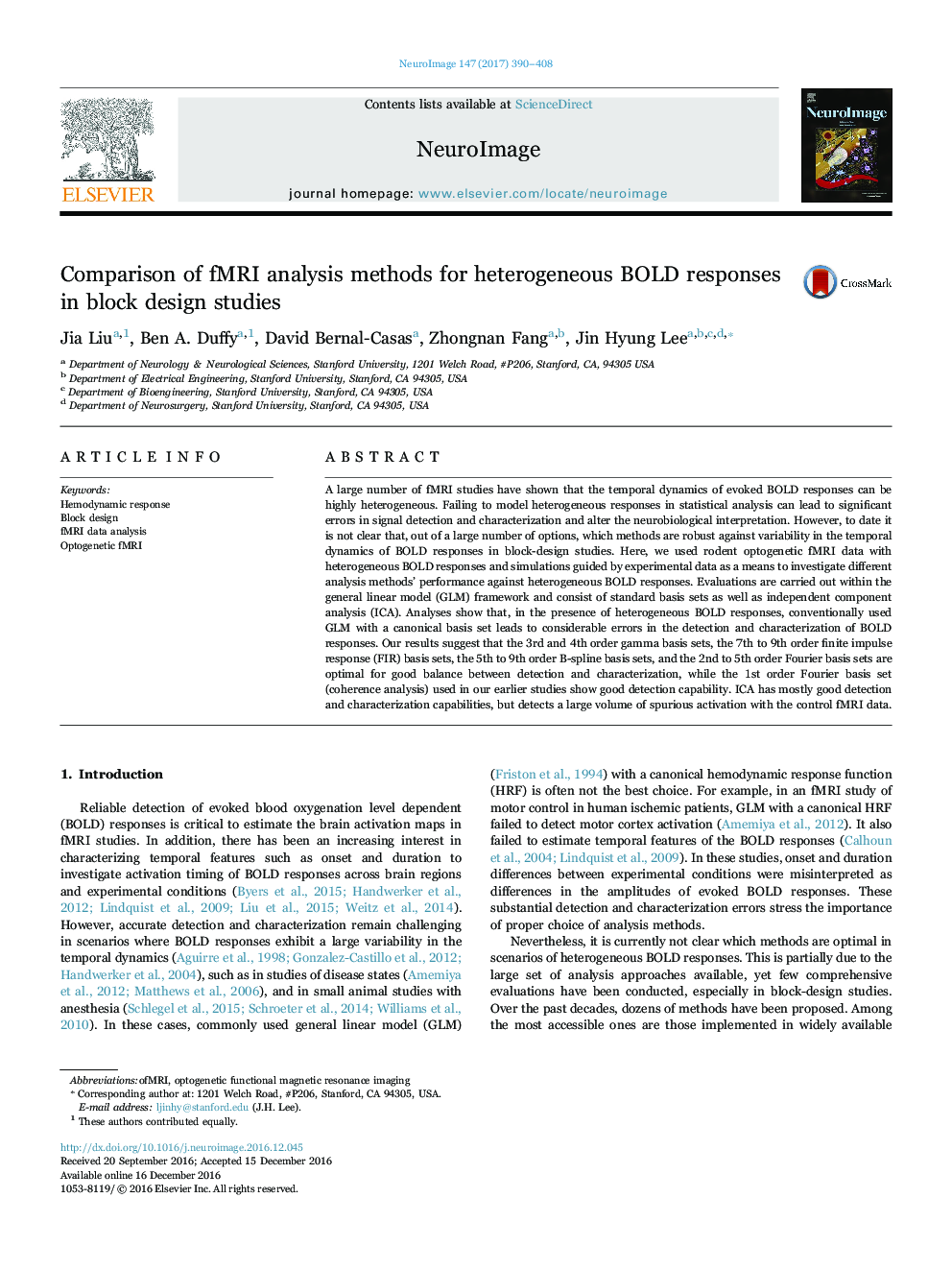| Article ID | Journal | Published Year | Pages | File Type |
|---|---|---|---|---|
| 5631513 | NeuroImage | 2017 | 19 Pages |
A large number of fMRI studies have shown that the temporal dynamics of evoked BOLD responses can be highly heterogeneous. Failing to model heterogeneous responses in statistical analysis can lead to significant errors in signal detection and characterization and alter the neurobiological interpretation. However, to date it is not clear that, out of a large number of options, which methods are robust against variability in the temporal dynamics of BOLD responses in block-design studies. Here, we used rodent optogenetic fMRI data with heterogeneous BOLD responses and simulations guided by experimental data as a means to investigate different analysis methods' performance against heterogeneous BOLD responses. Evaluations are carried out within the general linear model (GLM) framework and consist of standard basis sets as well as independent component analysis (ICA). Analyses show that, in the presence of heterogeneous BOLD responses, conventionally used GLM with a canonical basis set leads to considerable errors in the detection and characterization of BOLD responses. Our results suggest that the 3rd and 4th order gamma basis sets, the 7th to 9th order finite impulse response (FIR) basis sets, the 5th to 9th order B-spline basis sets, and the 2nd to 5th order Fourier basis sets are optimal for good balance between detection and characterization, while the 1st order Fourier basis set (coherence analysis) used in our earlier studies show good detection capability. ICA has mostly good detection and characterization capabilities, but detects a large volume of spurious activation with the control fMRI data.
